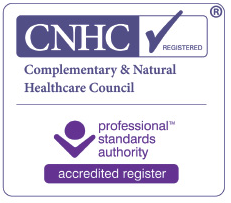Counselling gives the child the opportunity to talk about how they feel without the fear of judgement. Speaking to a counsellor, away from their home and school life can take away some of the pressure. Counselling offers a safe environment for children to express their feelings and understand what may have caused them to feel this way.
At the first appointment with a very young child parents will be asked to provide details of the problems the child is experiencing, how long these have been apparent, and for information about family circumstances. You will also be asked about the child's medical and educational history, and for any other relevant information. This will help to form an initial opinion and will assist in deciding the most appropriate next step. Sometimes it is possible at this point to offer some guidance to parents to take away and try for themselves with an invitation to come back again if required. Most often the second stage is required. This consists of appointments where an age appropriate approach is used to try and identify what the difficulty may be in view of the information previously provided. Sometimes even very young children are able to talk about perceptions of themselves and the difficulties they experience. Children also offer useful insights through their play.
The methods used in sessions will depend on the child’s age, situation and development. There are a number of tools that may be used to encourage children to express their feelings better, such as through play and art. Reading stories and talking about the feelings of a specific character can help them understand the emotion and, in turn, encourage them to discuss their own feelings, while drawing, painting or drama can help the child express themselves better. Sand tray therapy is another therapeutic approach that can be used in sessions. Sand tray therapy uses, hands-on techniques to encourage young people to express themselves by creating a safe, imaginary world with a variety of figurines, toys, and props. These objects might include “real life” figurines such as trees, people, houses and animals, or imaginary figurines, like wizards and monsters.
These toys and tools, which are carefully selected, to allow clients to create aspects of their inner or outer worlds in a tray of sand. Sand tray therapy creates a safe environment and can allow people to express emotional issues that they find difficult to put into words. For example, it may be easier for a person who has experienced a traumatic event to communicate their trauma through objects rather than explain the trauma verbally.
People don’t just think in words, we also think in images. Parts of the unconscious are often projected onto the objects used in the sand tray, bringing the unconscious into conscious awareness
Sand tray therapy is a healing process which helps the client work through any painful conscious or unconscious memories. At the end of the session, the therapist and client will reflect on and discuss the underlying meaning behind the creation.
Older children may prefer talking therapy, or a mixture of both. This is down to the child and we will discuss the situation together to learn what method will be most beneficial. Although different methods may be used for child counselling, the aim of counselling for both children and adults is the same; to help the individual cope better with their feelings and to enjoy life again.
This difficult developmental phase is full of complexity and uncertainty. The emotional and physical changes that occur during teenage years can create stresses that can be very hard to manage. Counselling & Psychotherapy are a widely recognised and much in demand response to the numerous difficulties adolescents experience. Anxiety and depression are common in this age group and occasionally coping mechanisms such as the use of drugs, alcohol or self-harming behaviours are present.
Adolescents present with a variety of difficulties, these may include but are not limited to:
- Eating distress or a diagnosed eating disorder
- Depression
- Stress, sometimes manifesting physically
- Anxiety
- Social Phobias
- Low self-esteem and poor self-image
- Self-harming behaviours including suicidal thoughts
- Drug and alcohol misuse and addiction
- Relationship problems
- Study and exam stress
This guide is a “work in progress”. If you have other questions please email them to me and I will be glad to help









